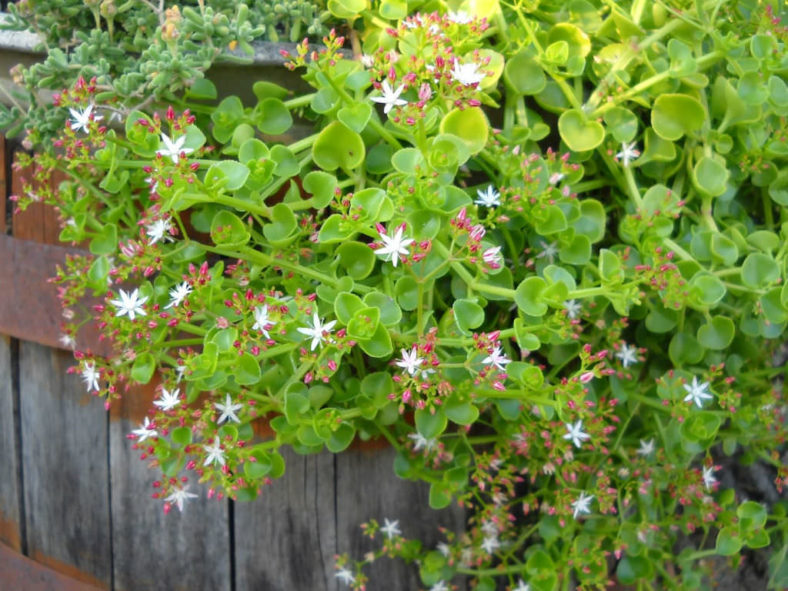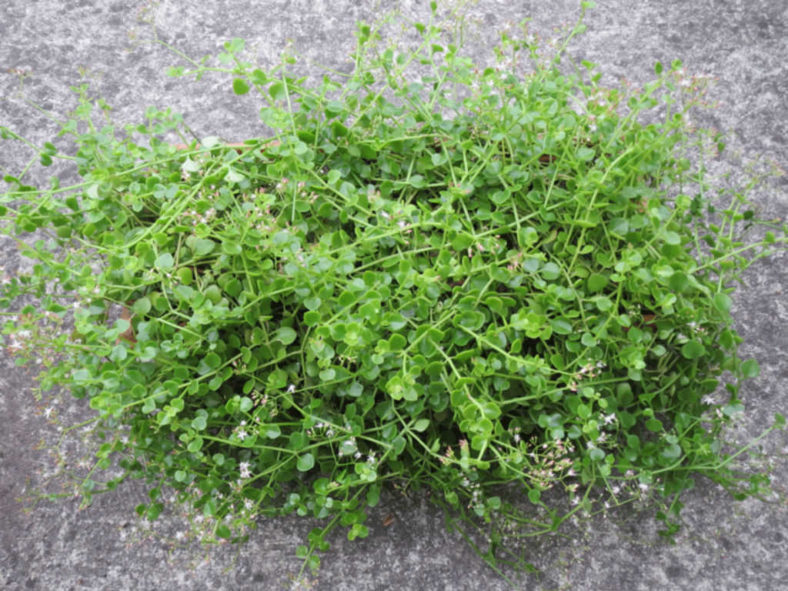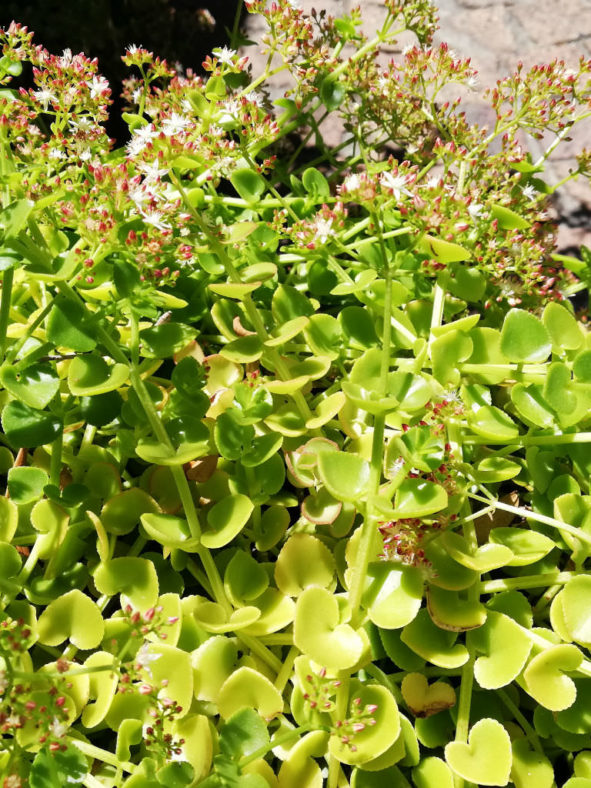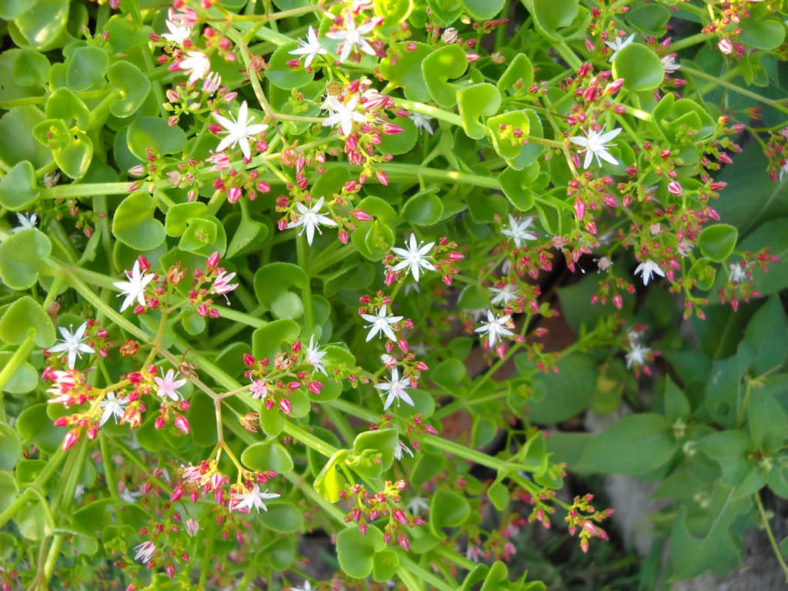Scientific Name
Crassula spathulata Thunb.
Common Name(s)
Spathula-leaf Crassula
Synonym(s)
Septimia spathulata
Scientific Classification
Family: Crassulaceae
Subfamily: Crassuloideae
Genus: Crassula
Etymology
The specific epithet "spathulata (spath-yoo-LAY-tuh)" means "spatulate, spatula-like" and refers to the shape of the leaves.
Origin
Crassula spathulata is native to South Africa (Eastern Cape, Western Cape, and KwaZulu-Natal).
Description
Crassula spathulata is a low-growing succulent with prostrate or scrambling, sparsely branched stems and small spatula-shaped leaves. The stems are slender, often quadrangular, and can grow up to 32 inches (80 cm) long. The leaves are green to yellowish-green and have tiny rounded teeth along the margins, often tinged red. They can measure up to 1.4 inches (3.5 cm) long and 1 inch (2.5 cm) wide and are attached to the stem by a petiole up to 0.7 inches (1.8 cm) long.
The flowers are star-shaped, white, often tinged red, and appear on branched inflorescences, usually from summer to fall.

How to Grow and Care for Crassula spathulata
Light: Crassula plants prefer full sun to partial shade. However, intense afternoon sun in the hottest period of summer can burn the leaves of the plants. Nevertheless, most Crassulas can be grown indoors if given enough light.
Soil: They are not particular about soil pH, but Crassulas require very porous soil with excellent drainage.
Hardiness: Crassula spathulata can withstand temperatures as low as 20 to 50 °F (-6.7 to 10 °C), USDA hardiness zones 9a to 11b.
Watering: These plants have typical watering needs for succulents. Avoid overwatering using the "soak and dry" method, where the soil is soaked with water, slowly drained, and left to dry out before watering again. Reduce watering in winter.
Fertilizing: Crassulas will benefit from a small amount of organic fertilizer in mid-spring when they start actively growing.
Repotting: Repot as needed, preferably in spring, at the beginning of active growth.
Propagation: Crassulas are generally started by leaves or stem cuttings. They can also be grown from seeds and offsets.
Learn more at How to Grow and Care for Crassula.
Toxicity of Crassula spathulata
Crassula plants are generally nontoxic to people and pets.
Links
- Back to genus Crassula
- Succupedia: Browse succulents by Scientific Name, Common Name, Genus, Family, USDA Hardiness Zone, Origin, or cacti by Genus
Photo Gallery
Click on a photo to see a larger version.



